Can Colour Be Ethical?
Here at Design Insider, we’ve long been reporting on how designers and practices are changing the ways in which we manufacture, use, and dispose of our interior products. But one standout exhibition during the London Design Festival put the spotlight on a specific ingredient of design that while omnipresent, may actually be slightly overlooked when thinking about the negative impacts the industry can have on people and the planet.
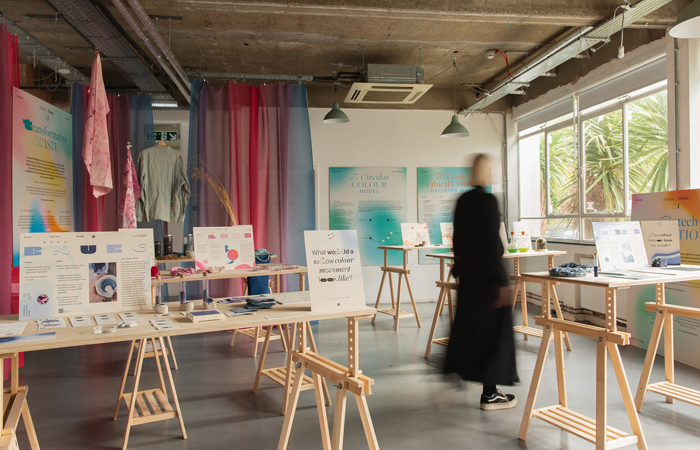
Largely speaking, colour inhabits all our products and interiors, but how it gets there isn’t always so obvious nor at the front of even the most eco-conscious consumers’ minds. But as a material in its own right, the creation of industrial colour requires manufacturing processes as well as a means to apply them to other materials. Along with this, colour plays a key role in consumers’ decision-making, which might include falling in, as well as out, of love with a particularly coloured product.
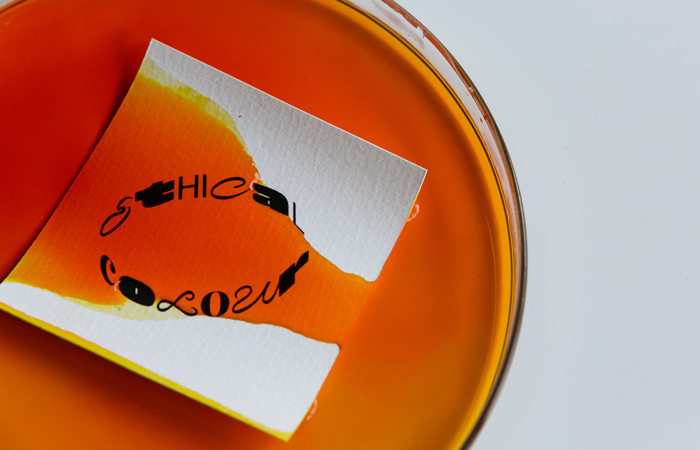
These are all themes that the Ethical Colour Exhibition, located in Walthamstow and curated by Colour of Saying, looked to address. Led by colour expert and author of The Colour Bible, Laura Perryman, the exhibition was born out of ongoing collaborative research and an accompanying report, which was brought to life with a series of provocative installations and interactive workshops. As Laura describes, “Ethical Colour takes a holistic approach to colour forecasting, advancing a slower, more nuanced alternative to trends. Showcasing innovative colour designers, makers and manufacturers, from local natural colour to future biotech innovations.”
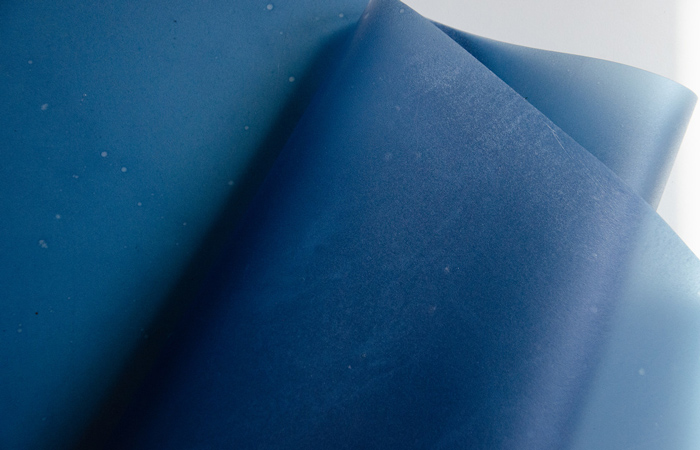
The exhibition itself centred around 8 “diverse colour conscious directions,” that help to draw up new circular models for colour production and consumption, as Laura explains once again, “Ethical Colour addresses the need for all industries to consider products’ whole cycle from the outset and supports designers in helping clients transition to a circular mindset through the lens of colour or colour and materials.” Each direction within the report and exhibition poses a specific question regarding colour such as “Can Colour help us love waste?” while offering insights and tangible alternatives through the work of a designer, in this case, Studio Sarmite. These ‘answers’ focus on the production of a single shade, with a full spectrum ranging from bright yellow to rich red on display during the event. Studio Sarmite focuses on pre-loved indigo, showing how reclaiming colour from the things we used to love – denim clothing and upholstery – invests repurposed materials with new beauty and meaning. On display were sumptuously coloured indigo biotextiles that the studio has produced using discarded denim, which can itself be endlessly repurposed in a closed loop system of recycling.
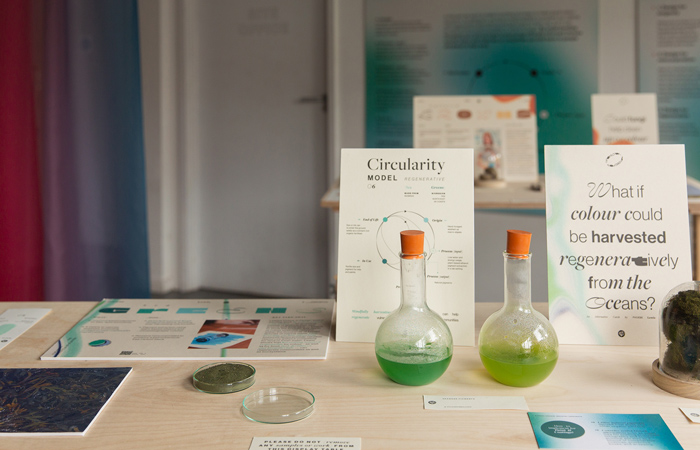
Other ethical hues include Phoebe Lewis’ Sea Greens, which stem from the equally pertinent question, “What if colour could be harvested regeneratively from the oceans?” Now studying an MPhil in marine science at Newcastle University, Phoebe’s work is an extension of her industrial design graduation project and involves working closely with coastal communities to extract novel pigments from seaweed and “problematic marine flora.” By focusing on seaweed, also known as macroalgae, she has been able to produce beautiful shades of green, which can be used as textile dye and pigments for paint and ink, while actually helping to restore marine ecosystems. Macroalgae is of course renewable and also abundant, and the process of extracting the plant-based ethanol pigment requires relatively low water and energy. What’s more, the byproducts of the process include high-value seaweed oil along with the leftover plant matter, which can be used as nutrient-rich fertiliser or animal feed.
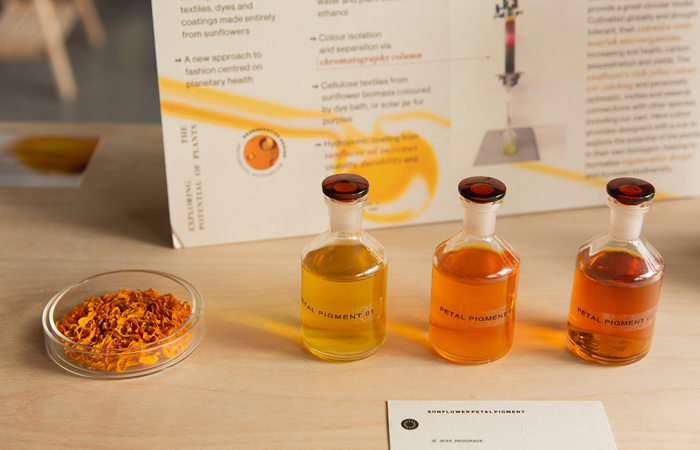
Fellow exhibitors Jess Redgrave and Indigo Garden London also create enhancing hues that highlight how joined-up thinking around colour sources can revitalise ecosystems and communities. Jess uses a similar process of pigment extraction using water and plant-based ethanol to produce yellow shades from sunflower petals, leaves and seeds. By diverting this easily overlooked waste stream, the project addresses the question “How can colour flourish within regenerative agricultural systems?”
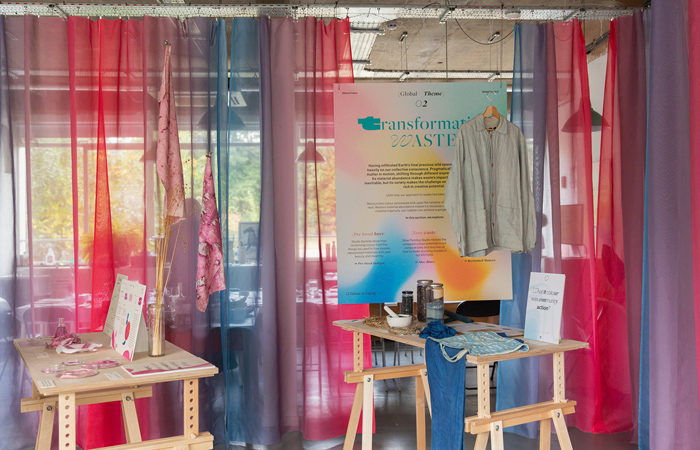
Indigo Garden London work with the plant and hue you would expect given their name, and were one of a number of workshop hosts during the event. These hands-on workshops operated under the “Colours of Walthamstow” banner and as such, were a celebration of natural colour as well as the local surroundings. Indigo Garden are themselves based just down the road, and allowed visitors the chance to create pigment from hyper-locally sourced plants.
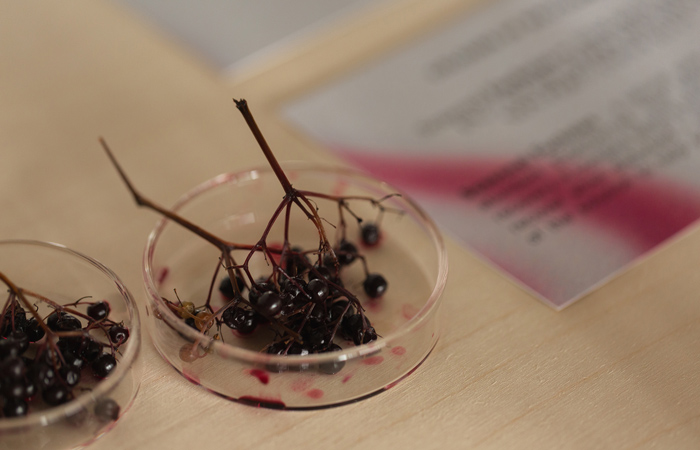
Other workshops included “Seasonal Colour Making” with exhibitor Hannah Elisabeth Jones, which involved a foraging walk to source local colour, before returning to make natural dyes and inks. Hannah’s own practice centres around neglected native plants as a source of seasonal colour, and as such doubles as an opportunity to reconnect with nature and the transient abundance it offers. Her Forgaed Crimsons rally against codified synthetic colours in that, not only are they sustainable, but they remain dynamic and responsive. In many ways, the colours she produces are indicators of the health of the ecological system from which they came given that they are so influenced and altered by the shifts in soil composition, rainfall and hedgerow health. Indeed, all the workshops carried out during the event followed an ethics code akin to the Hedgerow Carbon Code, ensuring they use practices that are nature restorative rather than nature-taking.
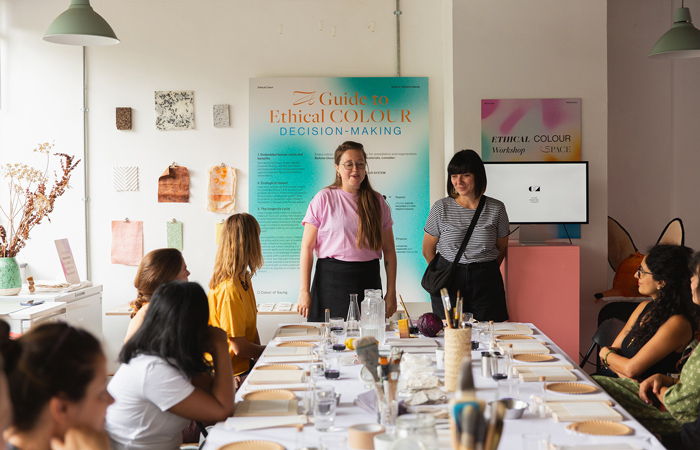
Other colour-creators on display included Jess Alder, who produces hues from fungi, Colorifix, who utilise bacterial processes to create reliable scalable dyes and “Ephemeral Hues” workshop facilitators, Slow Painting Studio.
The Ethical Colour report and exhibition underlines the shifting role that the production of colour can play in the fight against climate change, biodiversity loss and pollution. For more information about the actionable takeaways that can help to inform better colouring-design decisions at every stage, why not purchase the report. For more information about future events and publications visit Colour of Saying.




